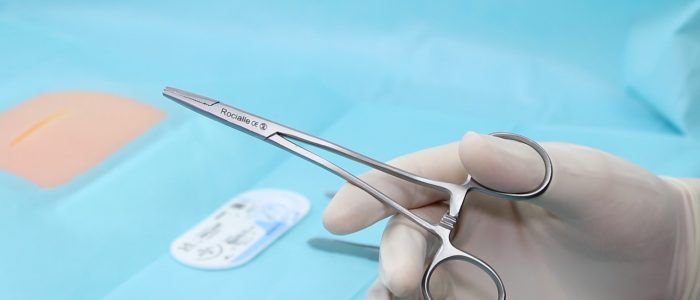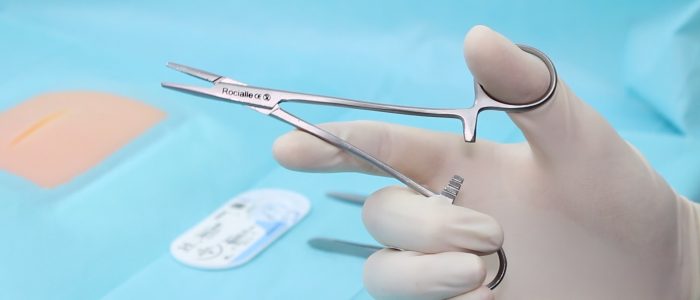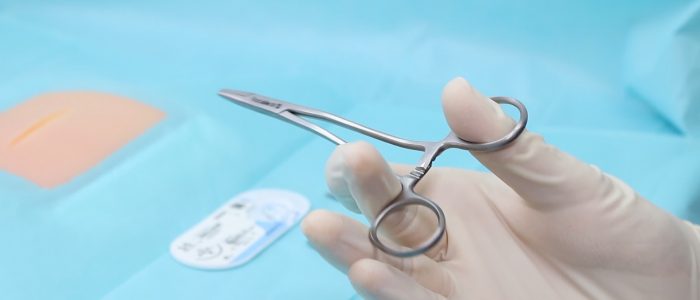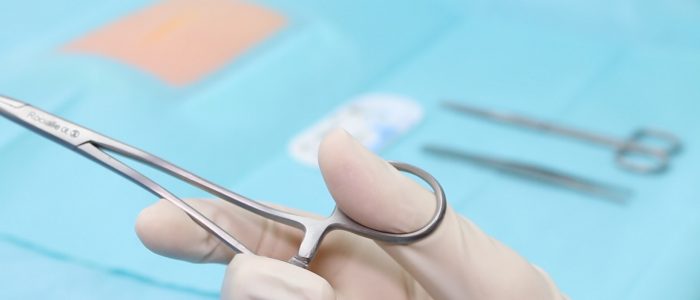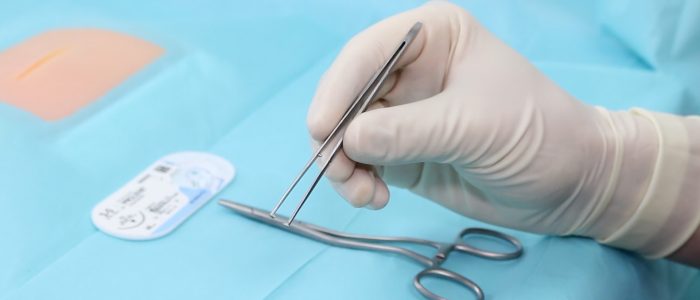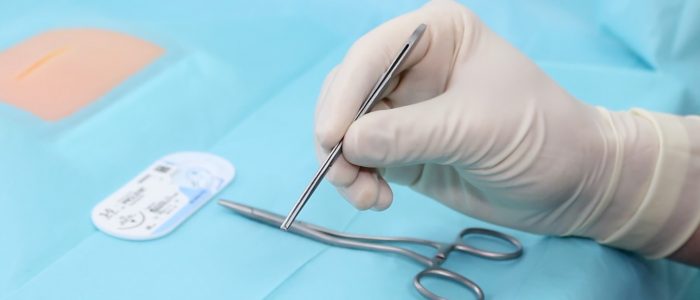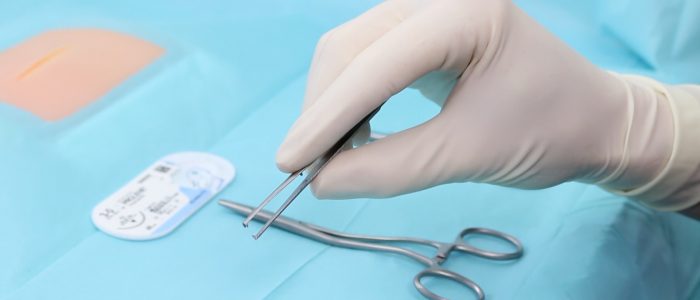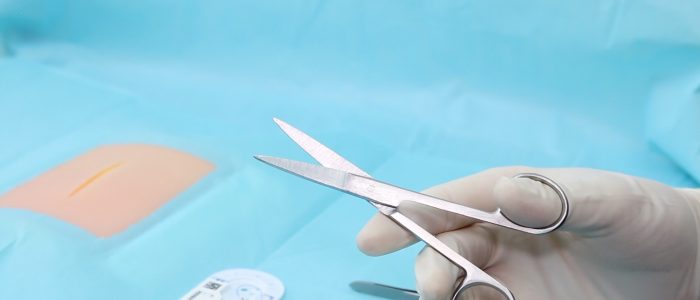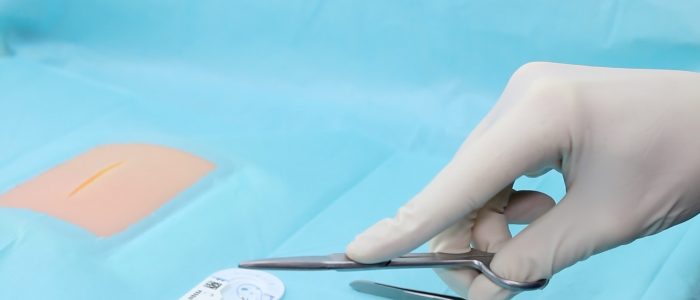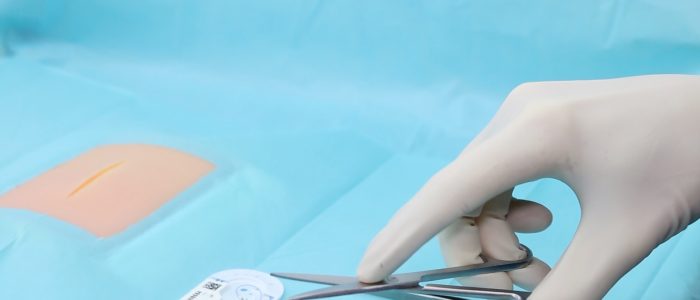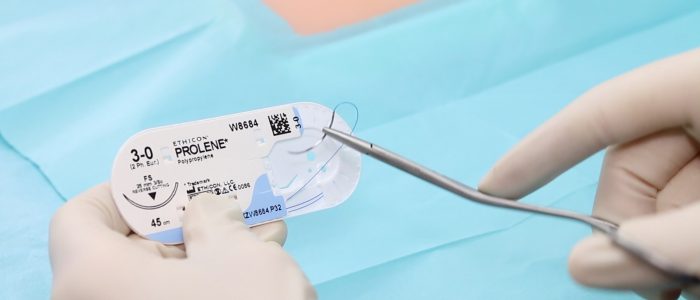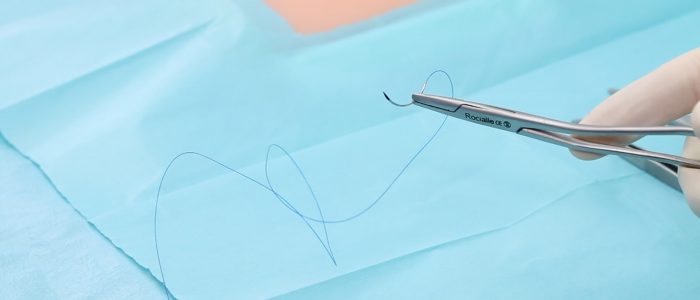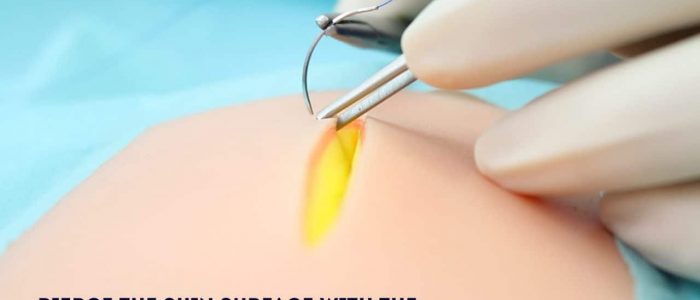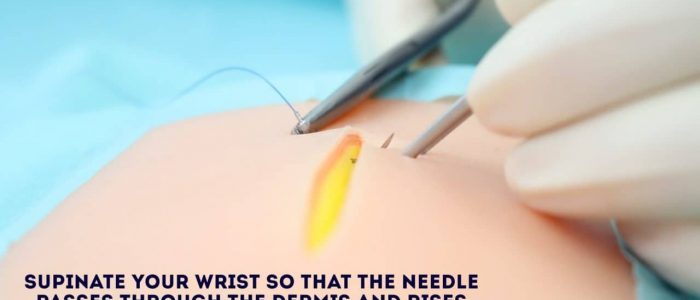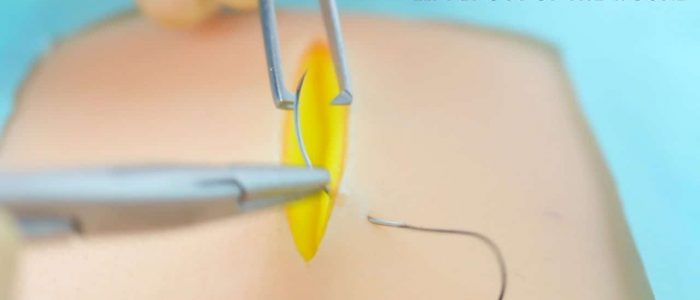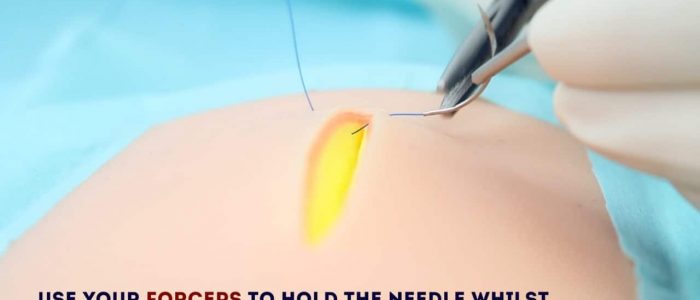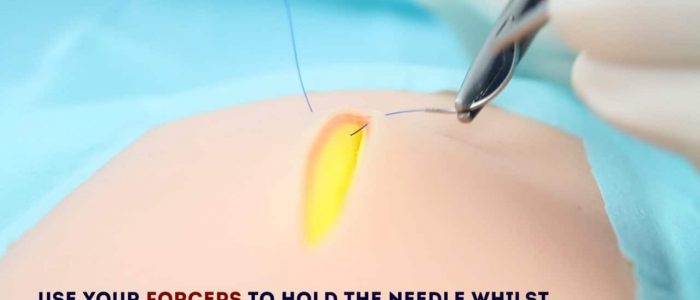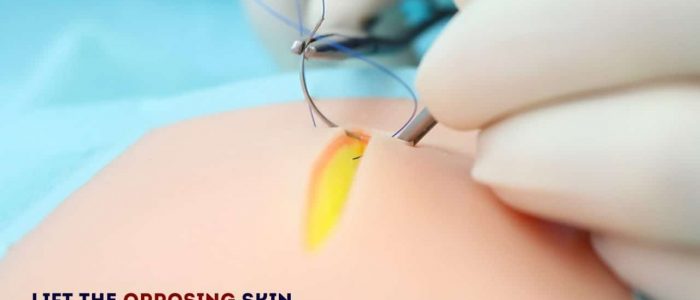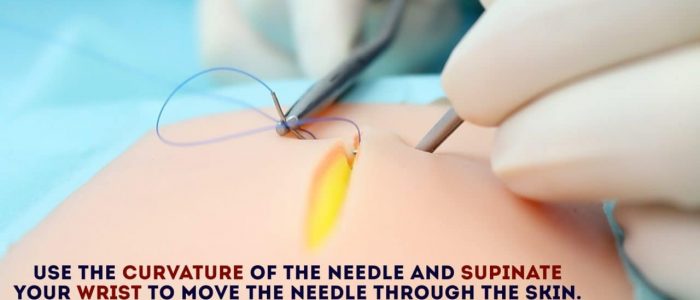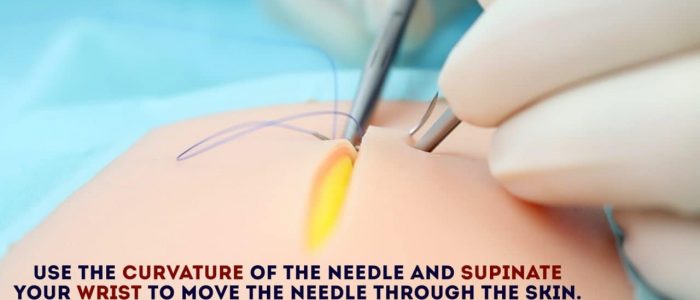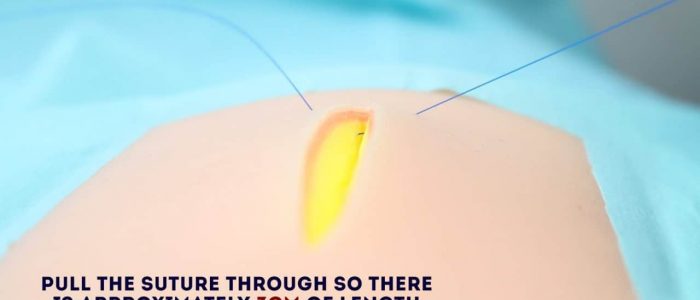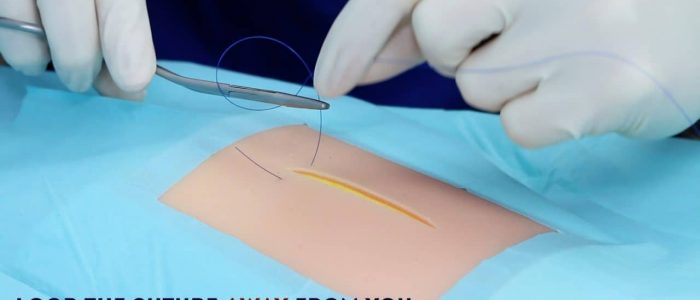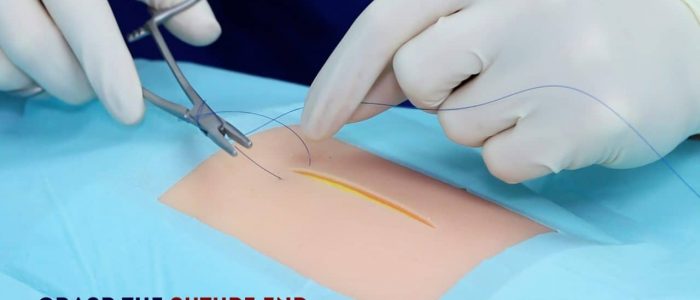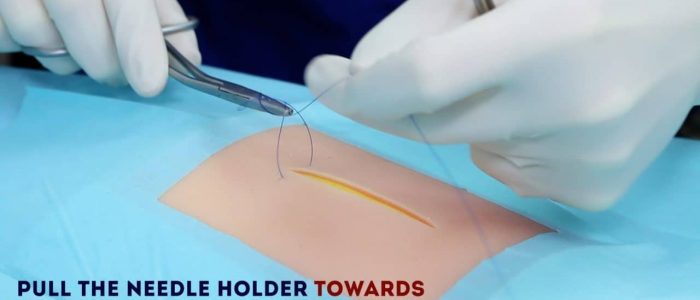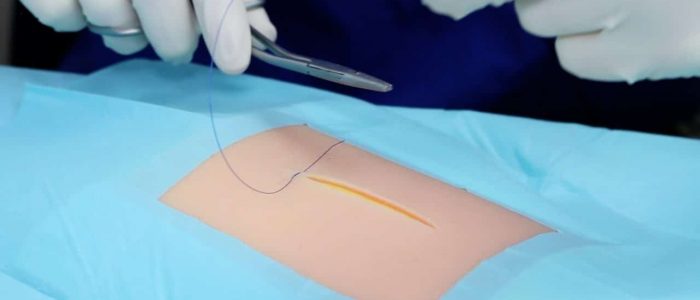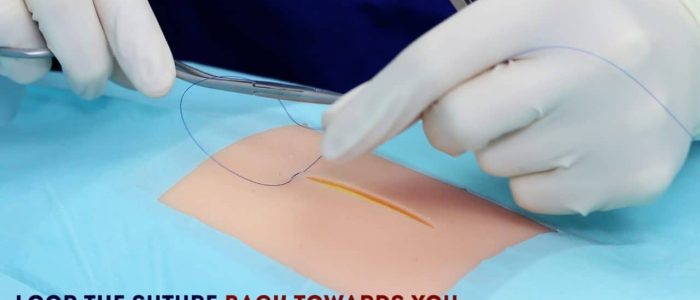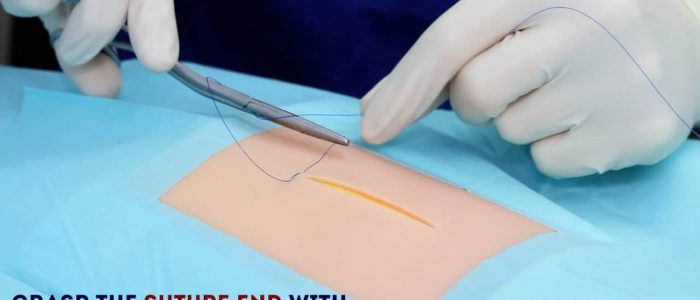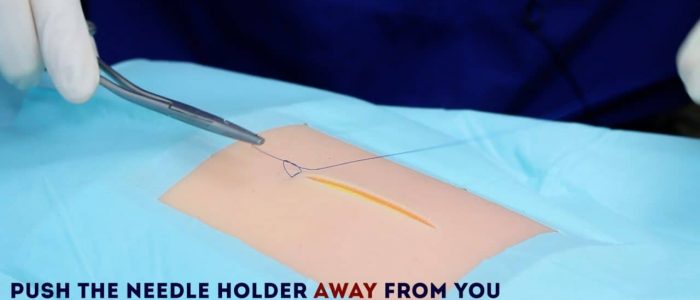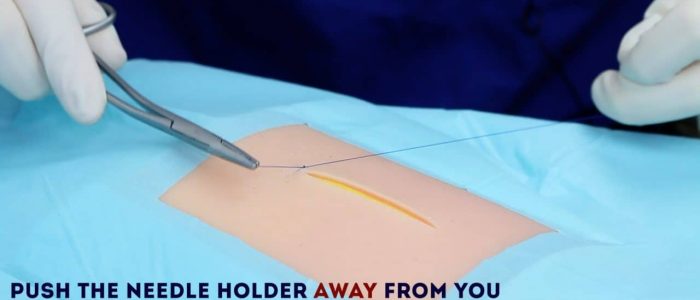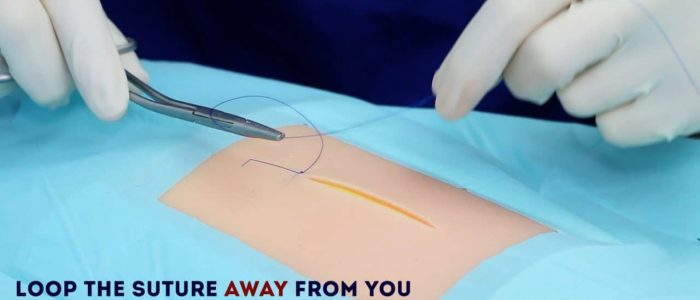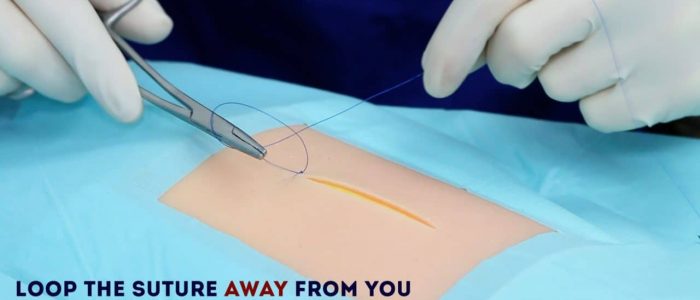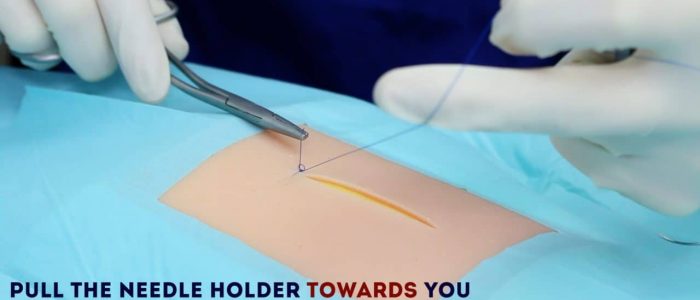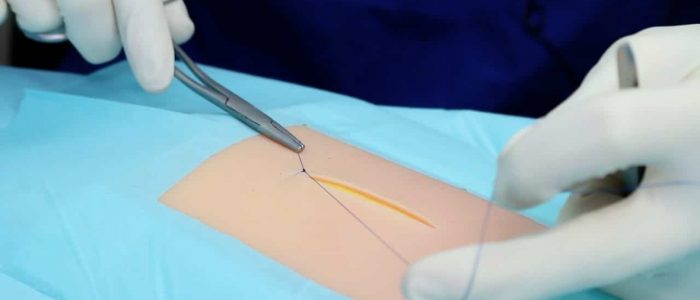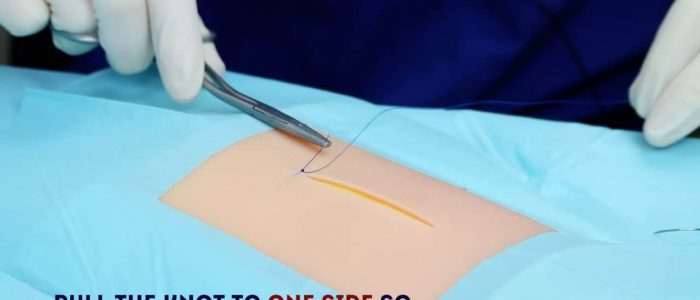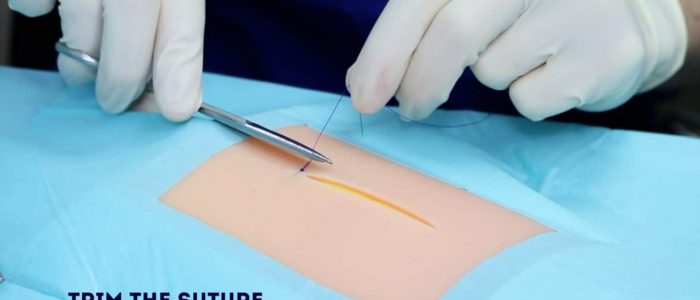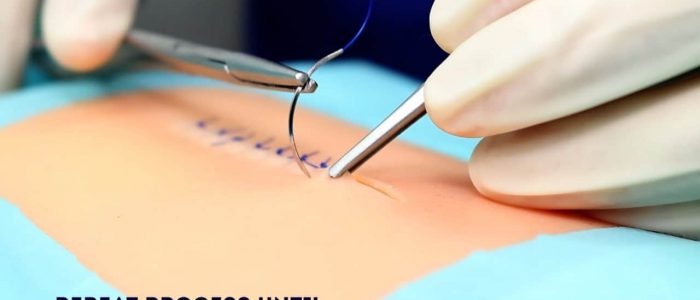- 📖 Geeky Medics OSCE Book
- ⚡ Geeky Medics Bundles
- ✨ 1300+ OSCE Stations
- ✅ OSCE Checklist PDF Booklet
- 🧠 UKMLA AKT Question Bank
- 💊 PSA Question Bank
- 💉 Clinical Skills App
- 🗂️ Flashcard Collections | OSCE, Medicine, Surgery, Anatomy
- 💬 SCA Cases for MRCGP
To be the first to know about our latest videos subscribe to our YouTube channel 🙌
This is an introduction to basic suturing skills, including how to perform a simple interrupted suture. Simple interrupted sutures are most appropriate for wounds with well-approximated skin edges under no tension. Here we discuss the equipment required, principles of wound management and the techniques you should adopt to suture safely and effectively.
You might also be interested in the following guides:
Equipment
Needle holder (a.k.a. Driver)
Needle holders should be held with your dominant hand.
Put your thumb through one handle and place your ring finger through the other handle. Some people prefer avoiding this as they feel you have greater dexterity and range of movement (this is referred to as “palming”).
Toothed forceps (a.k.a. Pickups)
Hold the forceps with your non-dominant hand in the same way you would hold a pen.
Be gentle when using toothed forceps to manipulate skin, do not grip it too tightly or you may damage the wound’s edges.
Scissors
Scissors are used for cutting sutures.
Position your index finger at the base of the blades to make your movements more precise.
Rest the blades on your index finger of your non-dominant hand to increase accuracy when cutting.
Suture
Different suture materials are used for different wounds, anatomical layers of closure and areas of the body. Some of this is the surgeon’s preference.
Please see our separate guide on suture materials for more information.
Basic principles of wound management
All wounds should have local anaesthetic infiltration before the intervention. Take care in cosmetically sensitive areas such as the lip as this may distort the normal anatomy.
Following this, they should be thoroughly washed and the wound bed should be examined for internal damage. Patients should be up to date with their tetanus immunisation and contaminated wounds warrant a course of an antibiotic such as co-amoxiclav or a suitable alternative if allergic.
X-rays should be performed if there is suspicion of a fracture or foreign body.
Wound edges should be debrided if the wound is contaminated. If there is no damage deep to the skin, then primary closure can be performed.
Use intuition, some patients have much thicker skin than others and will require a larger suture to facilitate wound closure.
| BODY AREA | SIZE | MATERIAL | REMOVAL TIME |
| Face/Lip | 6-0 | Monofilament, non-absorbable | 3-5 days |
| Scalp | 3-0, 4-0 | Monofilament, non-absorbable | 7-10 days |
| Chest/Abdomen/Back | 3-0, 4-0 | Monofilament – may be absorbable or non-absorbable | 10-14 days |
| Limbs | 3-0 to 5-0 | Monofilament – may be absorbable or non-absorbable | 10-14 days |
| Hands | 4-0 or 5-0 | Monofilament – usually non-absorbable | 10-14 days |
| Nailbed | 6-0 | Braided, rapidly absorbable | Absorbable |
Setup for simple interrupted sutures
This is a sterile procedure, and therefore the wound and surrounding skin must be prepared with antiseptic solution before placing a drape around the sterile field. You must wash your hands and wear sterile gloves, taking care not to ‘de-sterilise’ during the procedure. Although you may not need a surgical gown, you must don gloves and take care not to touch any external surfaces.
Wash the wound and debride the skin edges if ragged or dirty. If you are certain there is no deep tissue damage you may proceed to close the skin.
Load your needle holder by placing the needle in the tip of the holder, two-thirds of the distance from the tip to the thread.
Plan the entry and exit of your suture on either side of the wound. The suture should lie perpendicularly across the wound with equal depth and distance from the wound edge.
On a cross-sectional view, the final suture, once tied, should appear square.
Performing a simple interrupted suture
Out to in
1. Gently lift the skin with the forceps and pierce the skin surface with the needle perpendicular (90°) to the skin at approximately 4mm from the wound edge.
2. Supinate your wrist so that the needle passes through the dermis and rises out of the middle of the wound.
3. Use your forceps to hold the needle whilst you release your needle holder.
4. Re-grasp the needle in the same place with your needle holder.
In to out
5. Lift the opposing skin edge gently with your forceps.
6. This time the needle has to travel perpendicularly through the dermis from inside to outside. Use the curvature of the needle and supinate your wrist to move the needle through the skin. Equal needle bites of depth and distance from the wound should be taken to allow wound edges to oppose equally and neatly.
7. Again, use your forceps to grasp the needle and pull it through the skin. You should continue to follow the curvature of the needle as it travels through the skin, pulling the suture through as you go. You should now have a suture crossing perpendicularly to the wound, approximately 4mm from the wound edge.
Knot tie
1. Put down the forceps.
2. Pull the suture through so there is approximately 3cm of length on the opposing side.
3. Hold the suture in your non-dominant hand and the needle holder in your dominant hand.
4. Loop the suture away from you around the needle holder twice, then grasp the suture end with your needle holder. Pull the needle holder towards you and push your non-dominant hand away to lay the first knot.
5. Let go of the suture with your needle holder but keep hold of it in your non-dominant hand.
6. Now loop the suture back towards you around the needle holder once and grasp the suture end with your needle holder. Push the needle holder away from you and bring your non-dominant hand towards you to lay the second knot.
7. Finally, loop the suture away from you around the needle holder once, then grasp the suture end with your needle holder. Pull the needle holder towards you and push your non-dominant hand away to lay the final knot.
8. Once the knot is tied, use the needle holder to pull the knot to one side so it is not overlying the wound.
9. Now cut the suture between 5-6mm in length. If it is too short the knot will come undone. If it is too long, the suture material will become trapped within other knots and they will come undone.
Wound care and safe disposal of sharps
Once you have completed suturing, you must ensure that you account for and dispose of your sharps immediately in a sharps bin.
The wound should be washed and dried, then dressed appropriately. Dressings depend on the site of the body and professional preference, below are some examples:
- Face: Cover with steristrips and Micropore tape or provide chloramphenicol 1% ointment.
- Limb: Cover with a non-adhesive dressing such as Jelonet, Mepetel, or Silflex then gauze, Velband and crepe. A small wound may be covered with an OpSite or a Mepore waterproof dressing.
- Torso: Cover with non-adhesive then Opsite or Mepore. If large you may consider gauze and Mefix.
Follow up
All wounds should be reviewed in 5-7 days and sutures removed (if non-absorbable) as per the table above.
Key points
- Make sure you have equal bites on either side of the wound, this includes distance from the wound edge and the depth of the bite. If there is inequality, the skin edges will not approximate evenly and this risks an unsightly scar or even an epidermal inclusion cyst.
- Sutures should lie perpendicularly across the wound.
- Knots should not lie over the wound.
- Stitches should be spaced equally along the wound.
Authors
Mr Colin Brewster
Plastic Surgery Registrar
Mr Iain Anderson
Plastic Surgery Registrar
Reviewer
Mr Ahmed Ali-Khan
Consultant Plastic Surgeon



